sidetracks & detours present PASS IT ON # 69 weekly Supplement Sunday 29 9 2024
sidetracks & detours
present
PASS IT ON # 69
weekly Supplement Sunday 29 9 2024
CONTENTS

o
1 ) A Dream; COME THE RECKONING by Norman Warwick
2 ) Art Exhibition GALLERY AT HOME invitation by Claudia
3 ) Live Jazz VASILIS XENOPOULOS (saxophone) preview by Jazz In Reading newsletter
4 ) Jazz On Air: HOT BISCUITS served by Steve Bewick
5) Literature; SORROWS AND SHADOWS, Enid Blyton And Me , by Michael Higgins
6 ) Live Theatre. FORTHCOMING EVENTS The Lowry Theatre
7 ) Reader´s Perspective. All Points Forward. NASHVILLE: the roots of music city by Peter Pearson
8 ) Island Insights Lanzarote to capture WATER FROM THE FOG by Crusoe


Hear The Call
COME FOLLOW YOUR ART
editorial
Hello, thank you for joining us again. Its another bumper edition, but it starts with a strange story that some of you might recognise as being based on the song Pancho and Lefty by the late Townes Van Zandt. We then turn to our more familiar items led by the island´s favourite artist, Claudie who issues an invitation to her Gallery At Home. We then bring you the Live Jazz listings from Jazz In Reading and a preview of Jazz On Air in the form of a plate of Hot Biscuits delivered by Steve Bewick. We then publish as plethora of new events at The Lowry Theatre and our Americana correspondent, Peter Pearson examines Nashville´s role in country music. Finally, we tell you of a plan to extract water from fog. Enjoy your reading.


1 ) A Short Story : COME THE RECKONING
between Pancho & Lefty
by Norman Warwick

After being shown in the Thames, London UK initially the sculptures shown left were then bought as part of a commission by the Lanzarote Government.
For a long time, sculptor and artist Jason deCaires Taylor had some of his horse creations placed under the sea beneath Castillo de San Jose, Arrecife, and others placed to be seemingly lapping on the shoreline to eventually be half-covered by the tide until it retreated again. For most people they were a wonderful, welcome sight at both dawn and sunset, They never moved , of course, but we still always felt surprised to see them as we drove along the coast road of Arrecife.
There have been some shenanagins with the government calling for their removal (despite the fact that they had been the body that commissioned the work) but have recently re-installed them for a few months, and have announced they will move them elsewhere along the coast.
The other day I was on my roof just as dawn was breaking, and looking across to Fuerteventura and Los Lobos islands, some fifteen nautical miles from my house. Two horses and two riders were emerging from the sea on the Playa Blanca shore here on Lanzarote, only half a mile from my home. I raised the binoculars and a cold chill ran down my spine. Although I hadn´t seen Lefty since he and I split forty years ago, I had known that for all that time that he would eventually find me and try to kill me. The other rider I recognised as Sis Draper, who had been a fine fiddle player when I had last seen her. Neither of the two seemed to have grown older at all in those forty years. They weren´t speaking, they weren´t galloping: instead they were just strolling relentlessly with their eyes on my home,…. and on me.

Lefty and I had been what Guy Clark once called Desperadoes Waiting For A Train (to rob). I had been a ´bandit boy ´ with a horse as fast as polished steel and we always managed to evade the federales, though we heard that they were just biding their time.
They caught us in a shoot-out in Mexico, all very Billy The Kid. I hated that guy: me and Billy The Kid, we never got along.
Anyways we had to divide the posse that was closing in on us and I flew west on my quixotic horse, Rocinante, and Lefty rode east. I heard rumours he settled in Texas and I heard rumours that he had heard rumours that I still had all the money.
Now Lefty and Sis reined in their horses and each shouldered a rifle aimed at me, standing on the edge of my roof. They seemed kind of ghostly, but there was no doubt why they were here. Whether they were looking for me or the money I wasn´t sure.
I had planted enough seeds over the past four decades to create an assumption that I had died whilst making my escape and that the federales had gathered and divided the proceeds of my final job. Although I never really felt totally confident that I would never see Lefty again I never thought he would trace me out to a small Canary island in the gigantic Atlantic.
But now here he was, and we were staring eye to eye. I wondered whether or not he had realised how similar this landscape is to the ones where we once plied our trade.
I heard him cock the trigger as he called out, “You Know why we´re here.”
“I don´t know why Sis is here” I said.
“She´s my wife” he shouted.
I wasn´t sure that now was the time to tell him that Sis and I had done some dirty dancing to plenty of her favourite fiddle tunes.
I did notice that Sis was worried that I might.
Suddenly she swung round and fired straight into Pancho´s chest. His horse reared and threw him, and as he hit the floor on his back Sis emptied another round into his heart. She could have saved her ammunition. He was dead before he fell from the saddle.
I leapt off the roof and managed to pull her off her saddle as I came down.
It was then that things became very weird.
Pancho and his horse, and Sis and her ride, were in broken pieces of pottery in my garden, more like Jason´s horses than real humans and animals.
I asked myself if I had dreamed this whole event, I was the only person in the world who knew that Pancho and I were two sides of the same man.
My mother always told me as a child that I was her favourite son.
I was her only son.
Had I ever been a train robber? Well, if I was I never got no big money from it.
Was I chased by posses of federales? I¨m not sure I knew what a federale was.
In real life I was a writer and singer of pretty songs, so perhaps you´ll forgive me the drugs and the drinking, and just say I died from too much good living.


2 ) Art Exhibition
INVITATION
from Claudie
hello hola and happy autumn
Here comes an INVITATION fluttering. Just in time for the season change. I will do an open studio next Sunday the 29th of September 11:00 – 18:00. In the calle peña hendida 11, my little yellow house in Órzola. You are very welcome to bring friends and family. There will be a lot of art, craft, design, deco and jewelry. All done with love for the sea and Lanzarote!
Let’s spend some happy hours here with art and a chat and a glass of cava. I am looking forward to meeting old and new friends, have a lovely week.
Claudie

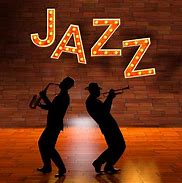
3 ) Live Jazz
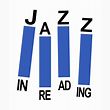
Vasilis Xenopoulos (saxophone)
preview by Jazz In Reading newsletter
Backed by the Pangbourne Jazz Club rhythm section:
Jim Pollard (piano)
Terry Hutchins (guitar)
Andy Crowdy (double bass)
Brian Greene (drums)

Saxophonist Vasilis Xenopoulos is one of the most accomplished Greek jazz musicians of his generation and a genuine representative of straight ahead jazz. London became his permanent home after graduating with honors from the Berklee College of Music in Boston and gradually established himself as one of London’s up and coming jazz saxophonists. He has worked with some of the best musicians of the International Jazz Scene as a band leader, a section leader and as a guest soloist at various projects.
In 2009 he formed “The Xtet” and their debut album “Loud City” containing 8 original compositions was released on 33Jazz Records in 2011. Two years later he released his second album “The Wind Machine” under the same label, which gained some fine reviews in the top British media such as The Times and BBC Radio 3.
In 2017 Nigel Price and Xenopoulos created the XPQ (Xenopoulos/Price Quartet) and recorded their first album under that brand, “Sidekicks”, which celebrates some of the most successful guitar/sax pairings in the history of jazz.
The Guardian praised him recently for being one of the leading examples of European jazz musicians who live and perform in Britain and bringing his continental element to the jazz scene. Further to that Vasilis has permanent collaborations with artists from Greece and Cyprus where he performs as a leader or guest artist on a regular basis. As a result he is permanently active in three different scenes/markets (British, Greek and Cypriot).
Vasilis’ charismatic performances reveal his truly fabulous style thus his energy and passion interact with his audience.
With his great talent, love and respect. he cherishes the instrument’s challenges and pushes it beyond.
His credits also include seminars on Jazz Saxophone and Improvisation.
His album “DEXTERITY” was released in September, 2019.
V.Xenopoulos is an endorsing artist of JodyJazz Inc., USA and Rigotti Reeds S.A France.

Coming next to Pangbourne Jazz Club
3 November: Lee Gibson, vocalist
17 November: Pete Roth Trio featuring Bill Bruford
1 December: Simon Spillett, saxophone
5 January: David Shiers’ The Big Colors Big Band


4) Jazz On Air
HOT BISCUITS
served by Steve Bewick

Hello Jazz Fans
Counterpointmusic, Helen Pillinger and Carole Williams, (shown right as quartet) are joined in a live set at the SLUG with Paul Hartley, Peter Hartley and Miles Pillinger on drums. So we are delighted to share with listeners the High quality musicianship from these talented players of both standards and originals.
Joining them on the show is Helena Debono Music. Also Charlie Bates will a new single.
Martha J. & Francesco Chebat Quintet pay tribute to Joni Mitchell.
Early Bird Family Band create a new sound of jazz funk from an exiled Ukrainian family of Jazz musicians.
John Donegan‘s Irish Sextet, will be standing `Close Nearby.` near to Tom Ollendorff Quartet, at `3 Bridges.`
We will be Finishing with a Pip Squeak Production from Phil Portus, `2020 June.` If these look interesting then check out the link below to listen this production and then and PASS IT ON to like-minded friends
www.mixcloud.com/stevebewick/ 24/07


5 ) Literature
SORROWS AND SHADOWS
Enid Blyton and me by Michael Higgins
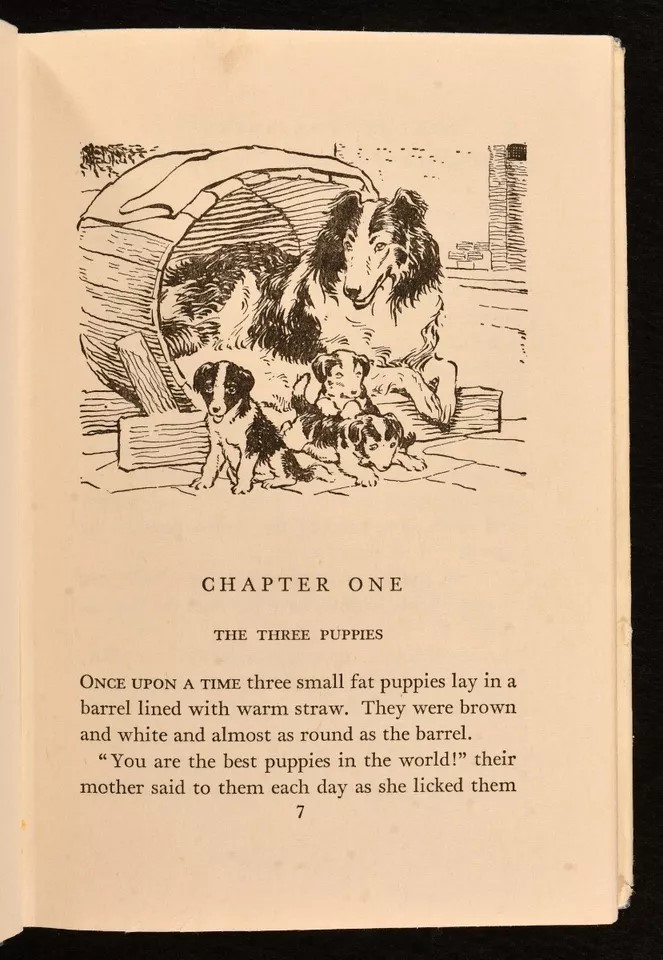
Recently I won a Lancashire Authors Society award for my poem The English Sheepdog. It was an old poem written when I was a bohemian high school dropout in Toronto. In this period, anticipating a return visit to Britain, I learnt Welsh at Dewi Sant Welsh United church. Fondly remembering my holidays in North Wales and my Welsh speaking primary school teacher, and at a loose end in life, I wrote the poem in her memory. She had ‘loaned’ me Enid Blyton’s Shadow the Sheepdog in the days before we emigrated when I was nine. I hardly thought my poem would win an award as the subject was decades old and was an unrhymed ‘free verse’ venture of only nineteen lines and of sparing language.

In it I relate how the book was ‘loaned’ to me and that just as my teacher had encouraged my love of maps of far away lands, I had travelled far over the waters with it. I speak of her inspiring me with ‘hot dragon winds of Celtic speech’ and say that sadly I never returned the book and that now, like Shadow, I hoard my own books as a flock of sheep
(see 1953 edition of Shadow The Sheepdog, (left)
Surprised by my award for the poem, I also won Writer of the Year award which surprised me even more, as my efforts for the year were also in Lancashire dialect and Standard English. But Shadow the Sheepdog is all pure English landscape and language. First published in 1942 it tells the story of little Johnny who lives on a farm with his father (also called ‘the farmer’) and his kindly mother who looks after the farmyard animals, hens, geese, ducks, as well as all the wifely and motherly duties of the mid 20th century, and post Second World War, farm. The book was first published in 1942.
Housed in an old barrel, sheepdog Jessie bears several pups, one of which follows Johnny all over the farmyard and house and becomes his ‘shadow’. All Jessie’s litter are sold to outlying farms, save Shadow after a few adventures running away from prospective buyers and being grudgingly kept by the family. He was however, lovingly adopted by Johnny, who gets away with the dog sleeping on his bed at his feet. Thereafter follow many adventures as Johnny teaches shadow to obey commands and the other farm sheepdogs, Tinker, Rafe and Dandy also teach the young pup to know his place and learn to separate the sheep from the proverbial goats and other intruders. These include rogue killer dogs and nasty Gypsies who camp on his father’s fields. Here Shadow is kept out all night guarding the farm from them after Johnny’s father orders them to leave next day.
The Gypsies, led by a nasty brown skinned man with black curly hair and gold earrings in his ears who lived with ‘dirty children in smelly caravans’ threaten both farmer and Shadow sent to watch them. I am not sure a children’s author would be happy describing what we now call ‘travellers’ that way today but this is a book of children’s fiction and children like being frightened by evil looking and smelling ‘baddies’. And this Gypsy camp did have some ‘baddies in it indeed. They tried to poison and then sell Shadow after throwing a rock at him. But at least they had the traditional horse drawn caravans, unlike the car drawn traveller caravans of today.
After an attempted poisoning and kidnap, Shadow is rescued by Johnny and fellow sheepdog Tinker. In the 1940s Johnny and Shadow have many adventures in the book as they both grow older and wiser and are given more responsibility around the flock and the farm. And throughout the book the simple Blyton language echoes not only the 1940s landscape but the post war mode of speech and simple life of a country family. Of course in Forties and Fifties Britain Blyton could get away by stereotyping Gypsies as having filthy children and smelly caravans. My mother said more or less the same to me in warning me to stay away from the real gypsies and caravans which annually camped in front of our house before we emigrated. We have to be more circumspect these days in writing about Travellers. But then in the 21st century we have to be so circumspect about nearly everything in our fear of offending either someone’s race or ethnicity.

Whilst living in Canada I was surprised to find that my local library refused to stock any of Enid Blyton’s books on the grounds they were not literate enough for the ideal reading child. I found this was common in the 1960s. This surprised me then as now, since Blyton (see right) (1897-1968) is one of the most most saleable and translatable authors in the world, having written over 700 books and over two thousand short stories in her lifetime. These include the Famous Five, Secret Seven and Malory Towers mysteries and of course the famous, in my day, Noddy books, featuring other characters in Toyland such as Big Ears and the by now linguistically memorable PC Plod. The latter has now given his name to innocent but perhaps hapless policemen everywhere.
Critics quote her repetitive style and themes, and of course her by now dated language. To me this is very appealing, partly as lifelong nostalgia, but of literary and historical charm too. Blyton wrote from the end of the first World War to the 1960s up to the time of her death and did an awful lot of it. She could write a book a week and it is now astonishing that Shadow the Sheepdog, at 153 pages in my edition, could have been written in a shorter time than it took me originally to read it. Modernists however seem to find objections in anything not modern. And criticisms of ‘elitist, sexist, racist and xenophobic ‘ themes in 20th century and earlier writing are de rigeur these days.

It is sad to read that Sam Leith, in his recommended and rejected lists of children’s books for the Daily Telegraph Review, puts Enid Blyton in the latter section and calls her work ‘the Japanese knotweed of mid-20th century publishing’ He says she is overdue a dose of weedkiller. He also says she ‘peddles dated attitudes and mimsy stories in clumsy prose’. But then I have never read books recommended by ‘experts’ and seemingly snobbish ones at that. As my copy of Shadow has long been lost partly due to a flood in my parent’s basement and many changes of address, I have finally managed to purchase the original 1953 edition illustrated by the atmospheric black and white drawings of G.W. Backhouse. This is the edition I never returned all those years ago.
I enjoyed every minute of the book and sighed over all those lost adventures which my poem evoked. But Japanese Knotweed? I am not sure the flower, field and nature-loving Enid Blyton would recognise that blight of the 21st century. Hers was a world of moral childhood and familiar landscape, escapism, comradeship and homely experiences. As the cold Autumn winds gather outside I think I will read the book again. And again.
The past can be a strange country sometimes but somehow, with good writing, it does not have to be. As my poem says, Blyton and my fondly remembered primary school teacher encouraged me to
‘… write poems about sheep folk
And their flock of worriers
And take care, loving care,
Of all my books.
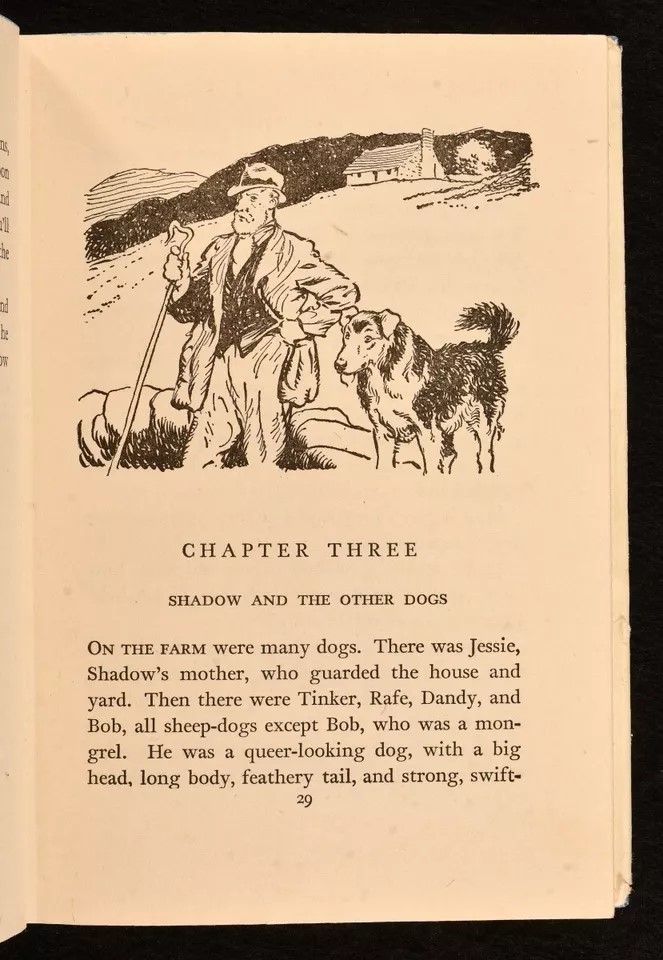


6 ) Live Theatre
EVENTS: AT THE LOWRY
previews by I Love Manchester newsletter
This autumn and winter, The Lowry is pulling out all the stops with an electrifying programme of world-class performances that promises to leave audiences on the edge of their seats.
From Broadway and West End smash hits to jaw-dropping dance spectacles, heartwarming musicals, and powerful theatrical masterpieces, there’s a show for every kind of theatre lover.
Prepare to be swept away by inspiring true stories, dazzling choreography, and unforgettable music as The Lowry welcomes you into a season packed with unmissable moments.
Whether you’re looking for an evening of emotional drama, huge spectacle, or feel-good entertainment, The Lowry’s lineup is brimming with exceptional talent and unforgettable experiences.
Get ready to make this autumn/winter one to remember!
COME FROM AWAY
From Tuesday 3rd of December 2024 – Sunday 5th of January 2025
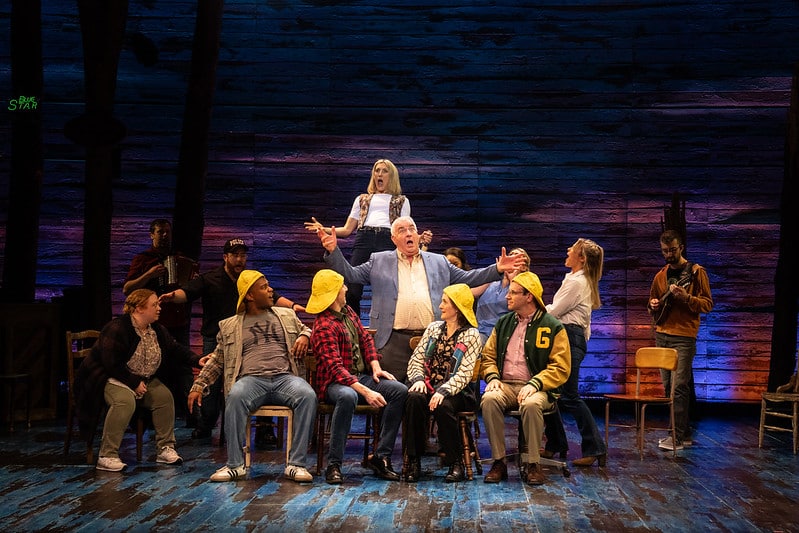
7,000 stranded passengers. One small town. An unforgettable true story.
Come From Away tells the uplifting real-life story of the 7,000 passengers grounded in Gander, Newfoundland, during the aftermath of 9/11. This Olivier and Tony Award-winning musical is a heartwarming celebration of community, kindness, and hope. With a joyous soundtrack and captivating characters, this life-affirming show will leave you cheering on your feet.
Running Time: 1 hour 50 minutes (no interval)
Age Guidance: 10+
From Tuesday 19th of November
To Saturday 30th of November 2024
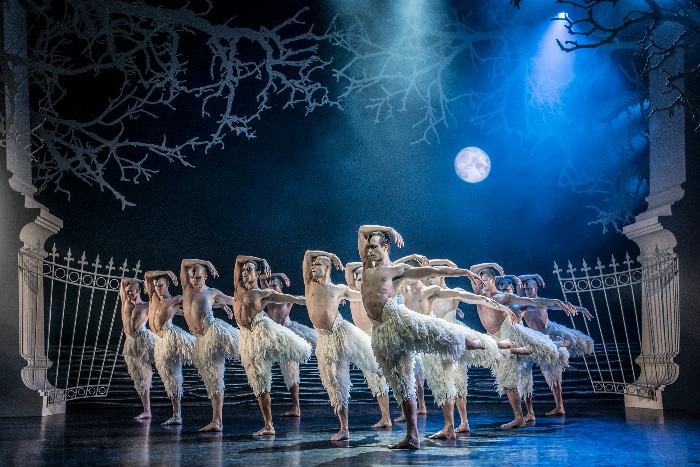
Matthew Bourne’s iconic Swan Lake shattered dance conventions when it premiered by replacing the traditional female swans with a powerful male ensemble.
This revival celebrates the lasting impact of this daring production. With thrilling choreography, emotive storytelling, and stunning visuals, this is a must-see for new and returning audiences alike.
Accessible Performances:
Audio Described: Saturday 23rd of November at 2 pm (Touch Tour at 1 pm)
HERE YOU COME AGAIN
The Dolly Parton Musical
Tue 29th of October – Sat 2nd of November
All of Dolly’s greatest hits in one joyful new musical, packed with her beloved songs. This heart-warming new musical tells the story of a diehard fan who finds solace in an imagined version of the country legend herself. With Dolly’s trademark wit and charm, this show is sure to lift your spirits and get you singing along to hits like 9 to 5, Jolene, and I Will Always Love You.
Rambert in Peaky Blinders:
REDEMPTION OF THOMAS SHELBY
From Tuesday 22nd of October
To Saturday 26th of October
An epic dance adaptation of the hit TV series Peaky Blinders: The Redemption of Thomas Shelby brings the gritty intensity of the show to the stage with stunning choreography and a live band. Follow Tommy Shelby as he navigates the dangerous post-war world of industrial Birmingham, set to a soundtrack of iconic music from Nick Cave, Radiohead, and more. This captivating performance is a must-see for fans of the series and newcomers alike.

Qudus Onikeku’s Re:INCARNATION
From Tuesday 8th of October
To Wednesday 9th of October 2024
Get ready for energy, music, and movement as Nigeria’s acclaimed QDance Company brings Re:INCARNATION.
This electrifying performance is a joyous fusion of dance, music, fashion, and visual art, celebrating the wealth of Nigerian culture. Blending ancient Yoruba philosophy with the dynamic pulse of Nigeria’s contemporary youth, Re is a celebration of life’s cycles, performed with infectious, uncompromising joy.
With ten dancers and two musicians, the show draws on the rhythmic heartbeat of Afrobeats, blending jazz, soul, funk, and traditional African music to pay homage to Nigeria’s rich musical heritage.
Bursting with urban chaos, the performers channel their personal stories through movement, resulting in a breathtaking reincarnation of their journeys. This is a show that will leave you spellbound by its sheer exuberance and high-octane energy.


7 ) Reader´s Perspective. All Points Forward
NASHVILLE: the roots of music city
by Peter Pearson
Some say the phrase “Music City, USA” was first uttered by Queen Victoria when the Fisk Jubilee Singers were touring in Europe just a few years after The Civil War. The Fisk Jubilee Singers are an African-American a cappella ensemble, consisting of students at Fisk University in Nashville, Tennessee. They still exist as a modern vocal ensemble singing mostly negro spirituals. The name Music City was more recently coined by Radio announcer David Cobb on a Nashville AM radio station called WSM in 1946.
At the time that statement was probably a little bit wide of the mark. Yes, the city had a popular and powerful radio station which broadcast the equally popular Grand Ole Opry and it attracted plenty of ace musicians and singers and in turn visitors to the live Oprey performances. However, those artists were forced to record elsewhere, as there were no viable studio recording facilities in Nashville. To that point, most of what we now know as classic country music had been recorded in other parts of the country. The Carter Family and Jimmie Rodgers first recorded in the border town of Bristol, Virginia. Atlanta was regarded as the home of country music recording.
The WSM radio station together with the Opry were the sparks that ignited the Nashville fire. In the mid-1940s, Eddy Arnold and Red Foley recorded at WSM’s studios, and by 1946, three WSM engineers took out a $1,000 loan and founded Castle Recording Laboratory in the Nashville Tulane Hotel. Brothers, Owen and Harold Bradley recorded with Hank Williams at Castle, and it began to attract dozens of Opry stars. But the rise of television meant that WSM demanded more time of its engineers, and Castle was closed.
WSM was key to the development of Nashville as a music city. It took to the air in 1925 backed by the National Life and Accident Insurance Company with a view to helping them sell insurance. WSM stands for “We Shield Millions”. It had a massive transmitter and its reach extended into Canada. The radio spawned the Grand Ole Opry, a live country music broadcast, which started about a month after the station started broadcasting and still continues to this day.
It introduced country music to the masses. Visitors flocked to see the artists, resulting in demand for records.
After several venues had been used the Opry moved to the famous Ryman Auditorium, a converted chapel, in 1943 before moving to a purpose built venue in 1974.Since then the Ryman, having been modernised, has been used off and on for short runs. It continues to be a live music venue.
Following the closure of Castle studio in 1954 Owen and Harold Bradley decided to open their own studio.
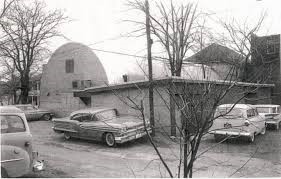
The studio was primitive and Decca, who used the studio, proposed taking their country recording business to Dallas and asked Owen to become their studio manager. However, Owen had a profitable and busy music schedule in Nashville, he had a radio band, played sessions and live dates-and was reluctant to give that up. Instead he proposed part funding a new Decca studio in Nashville. The deal would be a 50/50 split with his younger brother, Harold, contributing free sessions (Harold was not too enamoured about that but went along with it) Owen would be studio manager/producer and play sessions. Decca accepted the deal. However they failed to pay their share until years later when the studio was sold to Columbia Records. In the meantime Owen and Harold financed the studio by cashing in their insurance policies.
Just a few blocks from Nashville’s business centre is a ten – or twelve – block area that fifty years ago was just a faded residential neighbourhood. Today this area is known the world over as Music Row. It was here in 1955 that the brothers located their studio.
The brothers purchased a house at 804 16th Avenue South in Nashville for $7500 to convert into a film and recording studio. They tore out the first floor of the house to create a recording space in the basement. They also attached a surplus army Quonset Hut – a massive prefabricated galvanised steel unit to create extra space. Thereafter, the studio would always be known as The Quonset Hut and assume legendary status. Brenda Lee, Patsy Cline, Marty Robbins, Dylan, Johnny Cash and many more would record there.

In 1957 RCA built their first purpose built studio in Nashville (named as Studio B) just across the road from The Quonset Hut and installed top session guitarist, Chet Atkins as their studio manager. It was home to classic hits by artists such as Elvis Presley, The Everly Brothers, Dolly Parton, Jim Reeves. Atkins and Bradley were firm friends and collaborated on a routine basis.
Between them they made Nashville the place to record country music. They created the Nashville Sound (more on that next week) to create a sound which mixed pop with country and increased the use of strings.
In Nashville there is a saying “it all begins with a song”. Music publishing is the life blood of the music business.
The music publisher finds songs and persuades record companies and artists to record them. They will sign artists to publishing deals and collect royalties on their behalf. In 1942 Nashville had the Grand Ole Opry, no important record companies and no significant song publishers.
That soon changed when hillbilly singer Roy Acuff joined with songwriter Fred Rose to form the Acuff Rose publishing company in 1942. It was their signing of Hank Williams in 1946 that established them as Nashville’s premier publishing company. In the early fifties they were joined by Tree publishing owned by a man named Jack Stapp. In 1953, Stapp hired Buddy Killen, then twenty years old, to audition songs and sing demos. In 1956, Killen discovered “Heartbreak Hotel”, which he persuaded Elvis Presley to record. Presley recorded it on January 10, 1956, in a session with his band, the Blue Moon Boys, the guitarist Chet Atkins and the pianist Floyd Cramer. It was his first record for RCA and recorded in Nashville, though before the purpose built studio was built in 1957. Cedarwood publishing followed and before long Music Row was filled with publishers, record companies and all the supporting organisations.
By this time, in 1957, all the elements were in place to justify the claim made in 1946 that Nashville was Music City. All the major country artists were recording in Nashville. But it wasn’t only country. With the introduction of the Nashville Sound there were cross-over hits with pop artists mixing pop with country. Brenda Lee was recording pop in Nashville but later became a mainstream country artist. Owen Bradley recorded all her Decca sessions there between 1958 and 1968.

Owen Bradley and his family are known as the First Family Of Music Row. His younger brother and business partner Harold Bradley became one of the world’s most recorded session guitarists, and served as long-time president of the Nashville chapter of the American Federation of Musicians. His wife and later his son were heavily involved in the Nashville music business. In 1997, the Metro Parks Authority in Nashville dedicated a small public park between 16th Avenue South and Division Street to Owen Bradley, where his bronze likeness sits at a bronze piano. Owen Bradley Park is at the northern end of Music Row. Bradley also has a section of roadway named after him.

Owen and Harold Bradley (left), together with Chet Atkins, established the studio recording roots of Music City. They reigned supreme well into the 1970’s. As their time passed Music Row became populated with all the major record labels and the corporates took over. Some would run their Nashville operations via offices in LA or New York.
These days there are two versions of Music City Nashville. One is the pure country version centred around Lower Broadway, Music Row. It is home to the major record labels publishing companies, honky tonk bars and country music paraphernalia. Those songwriters and artists hoping to get commercially popular radio hits populate the area.
But there are songwriters who refuse to bend to the commercial writers mould. Most fall under the Americana genre and they tend to gather in the East Nashville area. There the housing is more affordable. They can have a studio and record label based in their own home or very nearby. There is a small venue infrastructure where they are able to perform their songs.
Whilst Nashville has changed over the years it remains home to Country and Americana genres of music. Those artists record mainly in Nashville, even if they choose not to live there. But top session players are an essential element of the recording process and Nashville had them in abundance, as I shall demonstrate next week.

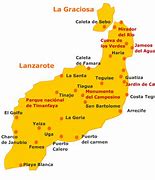
8) Island Insights
Lanzarote takes WATER FROM THE FOG
by Crusoe
Lancelot Digital last week reported on a technical and scientific breakthrough that could well provide Lanzarote with much needed extra water reserves.

The Lanzarote Island Council, through its Environment Department, is launching an initiative within the framework of environmental solutions to combat water scarcity on the island, which focuses on the installation of devices that allow the capture of water from fog. The project will be developed in various strategic areas of Lanzarote, with the aim of taking advantage of this natural resource in an efficient and sustainable manner.
The president of the Cabildo of Lanzarote, Oswaldo Betancort, has underlined the importance of this initiative for the future of the island: “The Life Nieblas project is a commitment to the future of Lanzarote. Through technological innovation, we manage to take advantage of a resource as valuable as fog, which can be transformed into water for our environment. This not only reinforces our commitment to the environment, but also positions us as a benchmark in the fight against climate change.”
Betancort highlights the importance of this type of initiative: “From the Cabildo of Lanzarote we will continue to support and promote projects that care for our environment and guarantee a sustainable future for future generations.”
The Minister for the Environment, Samuel Martín, explained the technical details and environmental benefits of the installation: “This project uses fog collectors designed to optimise water collection, which represents a significant advance compared to other traditional solutions. The water collected will be used to reforest degraded areas and preserve key ecosystems on the island. In addition, comparative data show that this technique is more efficient and less invasive for the environment.”
The project is currently in its implementation phase, with the installation of collectors at strategic points on the island. This system will mitigate the effects of desertification and contribute to the water balance in Lanzarote, an area historically affected by water scarcity.
With the participation of various public and private entities, Life Nieblas stands as a model to follow in the capture and use of natural water resources, positioning Lanzarote on the map of environmental innovation


Our team of dedicated contributors will be heading down the sidetracks & detours of this world at the crack of dawn tomorrow to find arts-related stories they can cover to share with you. One story per day will be published daily from Monday 30th September to Friday 4th October. All the other stories gathered in the week will be published in our compendium on Sunday 6th October in our PASS IT ON Sunday Supplement. So throughout this week we will deliver stories about great writers like Norman Mailer and Vibe Providers like Emmett Cohen.. We shall also look at the blossoming singer – writer of Americana, Amy Allen. We also review one of Lanzarote´s longest established and most loved folk lore groups, after hearing a concert that had us questioning when was now and when was then? Of course, there are also 1,200 or so free to read articles in our easy to navigate archives, and you can of course type a search in our engine on our front page to look for an artist, album, book or gig. We will take Saturday 5th off because there´s football on telly, and will return on Sunday 6th October with PASS IT ON # 70, which will include live jazz, live music and Live Theatre listings as well as pieces by our regular writers, Steve Bewick, Michael Higgins and Peter Pearson as well as some of our occasional contributors like Joseph Aloysius, Alfred Michael and Rosa Marie Satevs.
See you somewhere round the corner !ª



Leave a Reply
Want to join the discussion?Feel free to contribute!